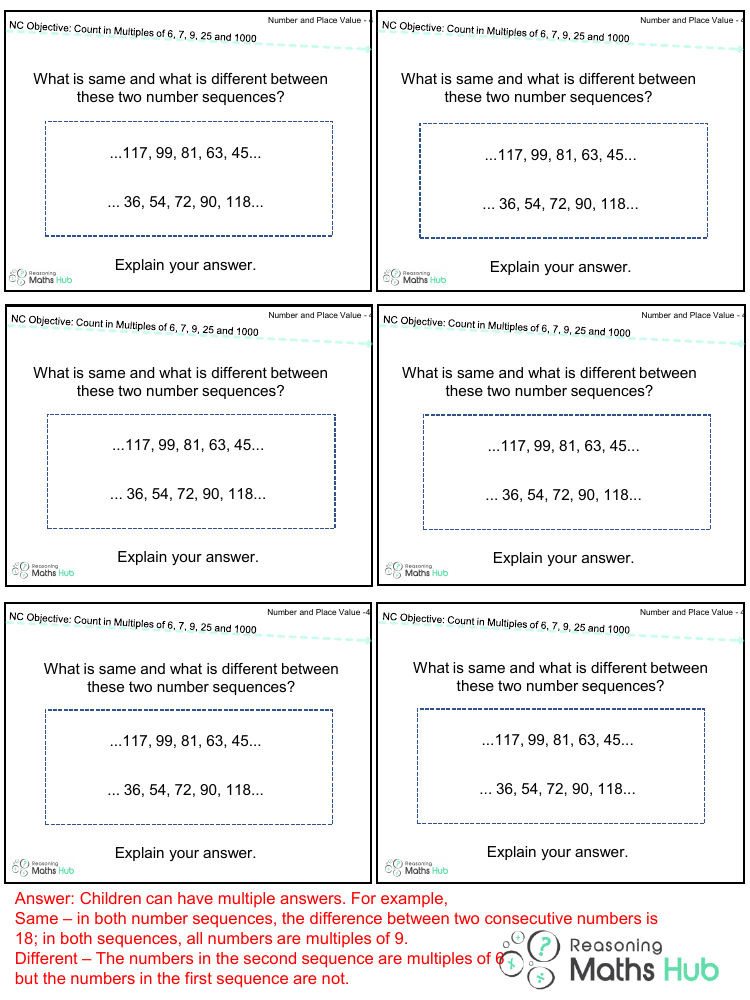Count in multiples of 6, 7, 9, 25 and 1000 2 - Reasoning

Maths Resource Description
The task at hand requires children to compare two number sequences and identify the similarities and differences between them. The first sequence presented is 117, 99, 81, 63, 45, and the second is 36, 54, 72, 90, 118. Upon examination, it becomes evident that both sequences share a common trait: each number is a multiple of 9. This is a key similarity, as it indicates that the regular intervals between the numbers in each sequence are factors of 9. Additionally, the difference between two consecutive numbers in both sequences is consistently 18, which is a direct result of counting in multiples of 9.
However, the sequences also exhibit a notable difference. The numbers in the second sequence are all multiples of 6, which is not the case for the first sequence. This distinction is crucial because it shows that while both sequences are structured around multiples of 9, they are characterized by different sets of multiples. The understanding of these patterns is fundamental for children to grasp the concept of number sequences and their properties, such as common differences and the identification of specific multiples within a given sequence.